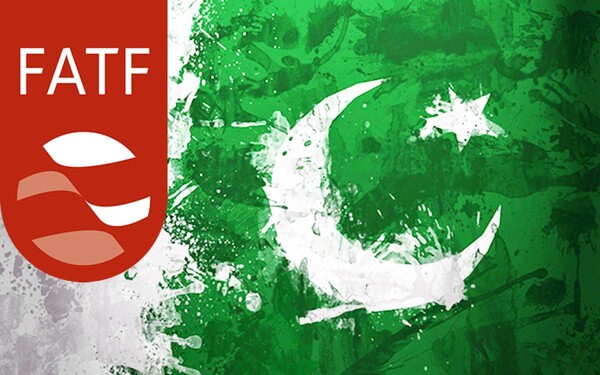Why is Pakistan off FATF grey list (GS Paper 2, International Organisation)

Why in news?
- Recently, the Financial Action Task Force announced that it would take Pakistan off its “grey list” of countries under “enhanced monitoring”, and welcomed what it called Pakistan’s “significant progress” in improving legal and government mechanisms.
- Pakistan, which has been trying to be taken off the list ever since it was listed in February 2018, hailed the decision.
About FATF:
- The Financial Action Task Force is a global watchdog on Anti-Money Laundering and Combating Financing Terrorism (AML/CFT) efforts.
- The 39-member body that was set up in 1989 out of a G-7 meeting of developed nations, is today made up of 37 countries and two regional organisations: the European Commission, the European Union’s executive body, and the Gulf Cooperation Council.
- India joined with ‘observer’ status in 2006 and became a full member of FATF in 2010.
How does FATF work and what do ‘grey lists’ and ‘black lists’ refer to?
- FATF members meet regularly to monitor various countries, “review money laundering and terrorist financing techniques and counter-measures; and promote the adoption and implementation of the FATF Recommendations globally”.
- The decision-making body of the FATF or Plenary meets thrice a year, in February, June and October, to take stock of “Mutual Evaluation Reports” (MERs) of the countries they review.
- If a country appears to have major deficiencies in its AML/CFT regime, it is put on a list of “jurisdictions under increased monitoring” or what is called the “grey list”, and if it fails to address FATF concerns it is put on a “high-risk jurisdictions” list, called the “black list”.
- Countries on both lists are subject to increasing levels of financial strictures, as the listing is like a global rating, and makes it difficult to procure loans from financial organisations like the IMF/World Bank, ADB etc., as well as to invite investment from private companies and other countries.
- During the recent plenary session on October 20-21, FATF countries, including India, reviewed the record of about 26 countries, and agreed unanimously to take Pakistan and Nicaragua off the “grey list”, add The Democratic Republic of Congo, Mozambique and Tanzania to the “grey list”, while moving Myanmar from the “grey list” to the black list for actions taken by the military junta since they overthrew the government in a coup last February.
Why was Pakistan removed from the ‘grey list’?
- Deliberations of the FATF are made in complete secrecy, and decisions are meant to be made strictly on the basis of technicalities and procedure, so the grey listing of Pakistan has to be seen in the totality of the process and measures it has undertaken.
- Pakistan was also on the “grey list” from 2012-2015, when FATF had mandated many steps. Since 2018, it has been handed two action plans, comprising 34 points (27+7), asking Islamabad to bring in laws on money laundering, and anti-terror laws in line with international requirements.
- Pakistan also had to maintain a database of terrorists and terror groups operating on its soil and the actions taken against them.
- This was a far cry from previous decades, when terror groups like al-Qaeda, the Taliban, Tehrik-e-Taliban, Lashkar-e-Taiba and Jaish-e-Mohammad operated quite freely, and designated terrorists like Hafiz Saeed and Masood Azhar addressed public rallies and even took part in political processes.
What was the sticking point?
- While Pakistan has completed many tasks, a major sticking point remained: In June 2021, then FATF President had asked Islamabad to address the last remaining item by “demonstrating that terror finance investigations and the prosecution target senior leaders and commanders of UN-designated groups”.
- Under UNSC guidelines, member states must ensure that all designated terrorists don’t have access to funds, arms and travel, and that all such terrorists are effectively prosecuted.
- In the 2021, much of Pakistan’s FATF reporting has been about bringing those terrorists, including Hafiz Saeed, 26/11 commander Zakiur Rehman Lakhvi, 26/11 planner Sajid Mir, IC-814 hijacking planner Rauf Asghar to court and a conviction.
- However, Pakistan claimed it couldn’t trace JeM chief Masood Azhar, wanted for a number of attacks from the 2001 Parliament attack and the J&K legislature bombing to strikes on military camps at Uri, Pathankot and the Pulwama bombing in 2019.
- It submitted to the FATF that he was believed to be operating from Afghanistan, a claim the Taliban denied. At the June plenary session, the FATF decided Pakistan was ready for an on-site visit that took place from August 31-September 2, and concluded that Pakistan’s reporting was reflected in measures “on the ground”.
What has been India’s response?
- India is a member, and hence party to all FATF decisions that are made by consensus.
- As a result, it also agreed to the decision to take Pakistan off the list, conceding in a statement that due to the FATF, Pakistan had been “forced” to take “some action against well-known terrorists”, including those involved in the Mumbai 26/11 attacks.
- The government is preparing for India’s turn at FATF scrutiny or MER process, set to begin in early 2023, which it hopes will be a smooth process.
In July 2022, while introducing the Weapons of Mass Destruction and their Delivery Systems (Prohibition of Unlawful activities) Amendment, External Affairs Minister told Parliament that India had to take its international commitments on WMD seriously, both at the UN Security Council, and FATF recommendations which had “mandated provisions against financing in relation to WMDs”.


